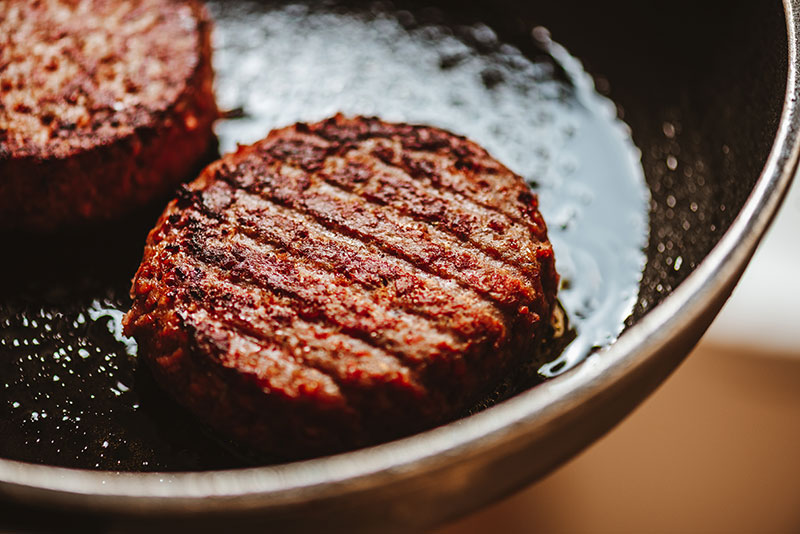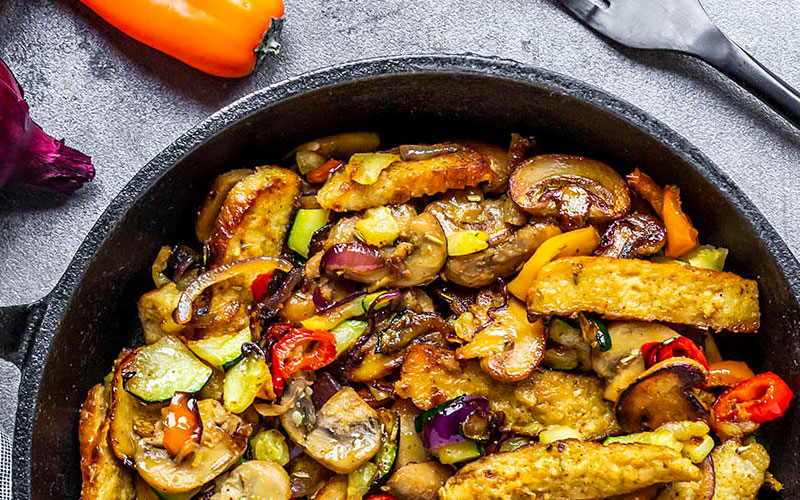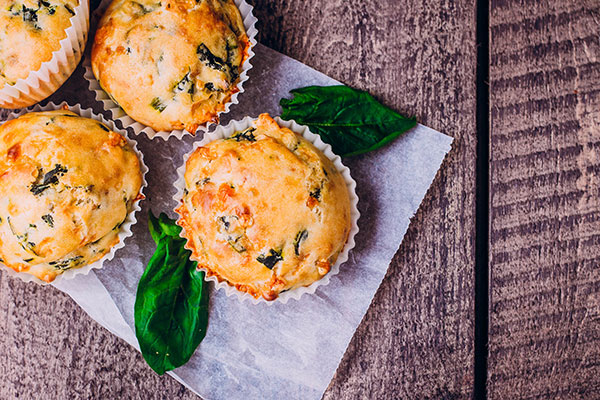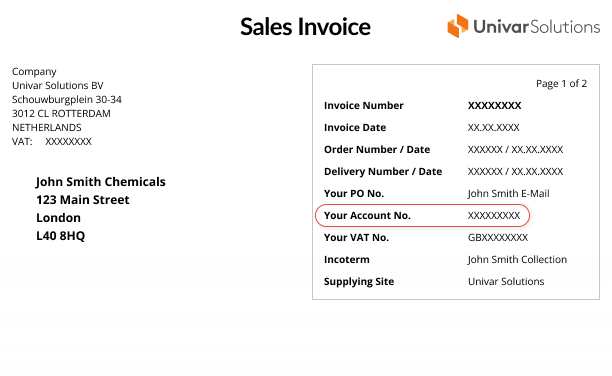We’re here to provide you with more information or help answer any questions you might have. Send us a note and we’ll get back to you as soon as possible.


According to the UN, circa 17% of global food production is wasted, with 11% being attributed to households, 5% to food service, and 2% to retail (1).
One of the common reasons that food is discarded is due to the deterioration of its quality or the expiry of its shelf life. In the context of an increasing population, this level of waste needs to be reversed across all food groups.
This article explores how tangible waste reductions could be made across meat products – which is the most resource-intensive food – and baked goods, by extending the perceived shelf-life through the use of natural antioxidants.
The good news: Food waste resulting from food products no longer appealing to the consumer is often avoidable and emerges from the perceived shelf life of the product. It is caused by a number of chemical and biological factors such as oxidation, yeasts, molds, bacteria, and staling (specifically in baked goods).
Oxidation is a key reason for the degradation of meat and baked goods and causes off-notes in flavour and aroma, plus changes in colour stability. It is also responsible for enzymatic browning in fruits and vegetables. Oxidation occurs when chemicals in food exposed to oxygen undergo unfavourable reactions, resulting in the food product having undesirable organoleptic characteristics.


When good fats go bad…
Simplistically, meat is comprised of proteins, fats (lipids), and water. Lipids are chemically unstable and readily oxidise to, amongst other things, aldehydes which are the aroma compounds responsible for off-flavour and off-aroma, characterised as rancidity. Lipid oxidation is a major cause of the deterioration of sensory quality in meat products and is particularly true of cooked meat products, where this is exacerbated by the cooking process. (2)
In fresh meat, it is oxidation that causes the colour to darken. Beef will then turn from bright red to brown or grey, resulting in the protein myoglobin becoming oxidised.
Similarly, the high-fat levels in some baked goods make them susceptible to oxidation, leading to the degeneration of aroma and flavour, and a loss of perceived freshness. The resulting flavours are sometimes described as rancid or cardboard-like, and, whilst this does not result in an unsafe product, it most certainly renders it undesirable and decreases the perceived shelf-life.
Extending shelf life with natural antioxidants in food preservation and ingredients
Antioxidants can be used to delay the oxidative rancidity of fats in stored foods, thereby maintaining product appeal and extending shelf-life. With consumers demanding natural ingredients and cleaner labels, there is huge potential to improve the product and label appeal by choosing natural antioxidants.
Plant-derived antioxidants
Synthetic antioxidants have been the norm due to their stability and performance, relatively low cost, and wide availability. However, there are food safety concerns relating to their longer-term consumption, with some research suggesting that they may lead to health issues such as skin allergies, gastrointestinal tract issues, and, in some cases, an increased cancer risk (3).
Natural antioxidants are derived from plants and can typically be categorised as phenolic, vitamin (typically E and C), or carotenoid. In a world where consumers are demanding natural and plant-based solutions, efficacious natural antioxidants play a major role in clean-label claims.
“Kalsec® Inc has found that whilst over 60% of consumers actively avoid preservatives, they are still focused on reducing food waste from both an economic and environmental viewpoint”, Gareth Jones, Product Manager for Food Protection at Kalsec, states. “Kalsec natural antioxidants can help customers achieve a good shelf life from natural products while using ingredients consumers recognize and understand.”
But which natural antioxidants are suitable for a given food matrix?




Natural antioxidant beneficial effects for meat and bakery
Natural plant ingredients known to provide antioxidant capabilities for meat preservation include:
- Rosemary and green tea (both high in polyphenols)
- Acerola - a sub-tropical fruit that is extremely high in vitamin C (ascorbic acid)
- Vitamin E (mixed tocopherols) - can be derived from oils such as olive, sunflower, or corn.
Rosemary extracts, which are high in polyphenols, help retain fresh meat colour. By combining acerola extract with these rosemary extracts, additional protection can be delivered in various packaging and display conditions, as the acerola further inhibits oxidation.
In cured meats, acerola extract functions as a strong nitrite-reducing agent without a large impact on product pH, thus accelerating and improving the rate of cured colour development. It also serves as an oxygen scavenger and helps prevent oxidation and colour fading during its shelf life.
Rosemary extracts are also invaluable antioxidants in baked goods by reducing rancid off-flavours and off-aromas.
Food matrices are complex, and so are the commercial processes that create them. Therefore, it is imperative to understand the available natural antioxidants, and their synergies within the context of the product and process: To maximise efficacy.
Oxidation Management Systems by Kalsec
Kalsec has created the Duralox ® Oxidation Management Systems, designed for specific products and food processing conditions, unique to each application.
The Duralox system optimises antioxidant properties for each given food matrix, capitalising on the synergies of its key antioxidant components, namely rosemary (Herbalox ®), green tea, acerola, and tocopherols.
If extending product appeal and shelf life are some of your current formulation challenges, the technical specialists from the Foodology by Univar Solutions team are here to help create your winning recipe.


Resources
UNEP Food Waste Index 2021 FoodWaste.pdf
Amaral et al, 2018 - https://www.scielo.br/j/cta/a/3ZDMTNLBZ63pGz3DgsbyS7h/?lang=en
Lourenco el al, 2019 - https://www.ncbi.nlm.nih.gov/pmc/articles/PMC6891691/
- Aliquam lacus eros, suscipit at laoreet iaculis, ornare vitae leo.
- Aenean volutpat risus diam, nec fermentum magna blandit a.
- Nam mollis faucibus ante eu faucibus. Ut consequat sed nisl vel condimentum.
- Praesent nec lacus nisl. Ut ac tellus nisi.
- Mollis faucibus ante eu faucibus. Ut consequat sed nisl vel
- Aliquam lacus eros, suscipit at laoreet iaculis, ornare vitae leo.
- Aenean volutpat risus diam, nec fermentum magna blandit a.
- Nam mollis faucibus ante eu faucibus. Ut consequat sed nisl vel condimentum.
- Praesent nec lacus nisl. Ut ac tellus nisi.
- Mollis faucibus ante eu faucibus. Ut consequat sed nisl vel
- Aliquam lacus eros, suscipit at laoreet iaculis, ornare vitae leo.
- Aenean volutpat risus diam, nec fermentum magna blandit a.
- Nam mollis faucibus ante eu faucibus. Ut consequat sed nisl vel condimentum.
- Praesent nec lacus nisl. Ut ac tellus nisi.
- Mollis faucibus ante eu faucibus. Ut consequat sed nisl vel
| Heading 1 | Heading 2 | Heading 3 | Heading 4 | Heading 5 |
| Text | text | text | text | tex |
| Text | text | text | text | text |
| Heading 1 | Heading 2 | Heading 3 | Heading 4 | Heading 5 |
| Text | text | text | text | tex |
| Text | text | text | text | text |
Section title
Aliquam lacus eros, suscipit at laoreet iaculis, ornare vitae leo. Aenean volutpat risus diam, nec fermentum magna blandit a. Nam mollis faucibus ante eu faucibus. Ut consequat sed nisl vel condimentum. Praesent nec lacus nisl. Ut ac tellus nisi.
Nulla tempor consectetur enim, sed laoreet orci commodo vitae. Nulla facilisi. Donec eu felis sapien. Mauris sapien magna, suscipit eu leo scelerisque, lobortis scelerisque arcu. Aenean lacus metus, ullamcorper non venenatis at, tincidunt et diam. Vivamus dapibus ipsum ante, a mattis arcu mollis sed. In hac habitasse platea dictumst. Nunc rhoncus felis a scelerisque gravida. Nunc porttitor, dui in ullamcorper eleifend, diam nibh iaculis risus, et sagittis justo neque vitae ligula. Vivamus semper placerat diam, at fringilla mi.
Section title






Section title














